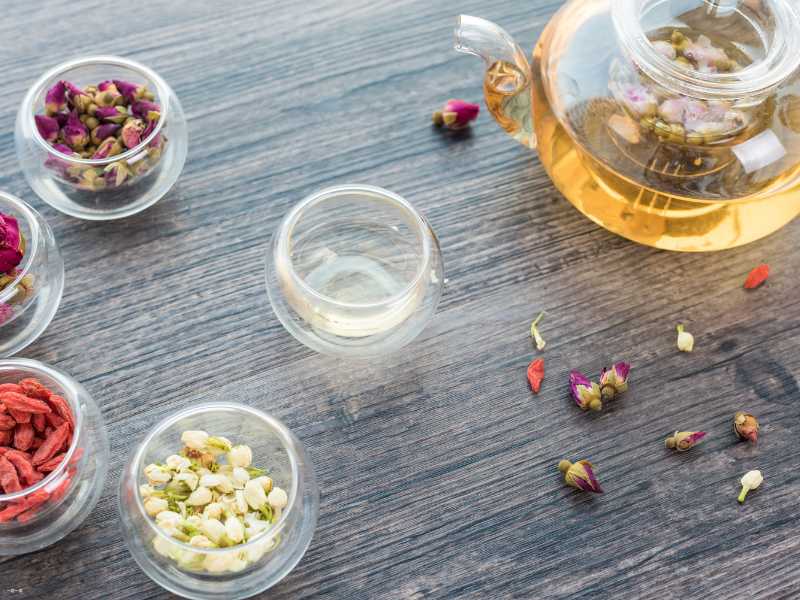The Global Language of Fragrance: How to Say Jasmine Tea in English 🔍
The delicate, intoxicating aroma of Jasmine Tea wafting from a teacup is instantly recognizable to millions worldwide. Imagine ……
The Global Language of Fragrance: How to Say Jasmine Tea in English 🔍
The delicate, intoxicating aroma of Jasmine Tea wafting from a teacup is instantly recognizable to millions worldwide. Imagine a visitor from London or New York encountering this floral delight for the first time – their senses captivated, they inevitably ask: “What is this exquisite drink called?” The answer, bridging East and West, is simple yet evocative: “Jasmine Tea.”
For centuries, Jasmine Tea (茉莉花茶, Mòlìhuā Chá) has been a jewel in the crown of Chinese tea culture, cherished for its captivating scent derived from meticulously scenting tea leaves (typically green, but also white, oolong, or black) with the blossoms of the Jasminum sambac plant. Its journey onto the global stage has made its English name, surprisingly and elegantly straightforward, a universal passport.
Beyond Translation: The Essence of the Term “Jasmine Tea”
Unlike many other teas whose English names might be direct phonetic translations or specific regional terms (like Oolong or Pu’erh), “Jasmine Tea” transcends cultural barriers through sheer descriptiveness. This is its primary and universally understood designation in the English-speaking world.

- Why “Jasmine”? The name pinpoints the source of the tea’s defining characteristic – its enchanting floral perfume. The word “jasmine” itself entered English via Old French (jasmin) and Arabic (yasmin), ultimately tracing back to Persian (yâsamin), reflecting the flower’s long history and widespread appreciation. Using “Jasmine” immediately communicates the core sensory experience.
- Why “Tea”? This universally recognized term anchors the beverage within its broader category.
- Clarity is Key: Combining these words creates a name instantly comprehensible to any English speaker: this is a tea infused with the fragrance and flavor of jasmine flowers. Its simplicity eliminates ambiguity and fosters global recognition.
Nuances in the Naming: Exploring Specific Varieties
While “Jasmine Tea” serves as the perfect umbrella term, the world of scented teas welcomes a few more specific descriptors, often highlighting unique characteristics:
- Jasmine Pearl Tea (Jasmine Dragon Pearls): This term refers to one of the most visually stunning and prized types. Here, young tea leaves are hand-rolled into small, tight “pearls” before undergoing the scenting process. Witnessing these pearls unfurl slowly in hot water is a ritual in itself. The name perfectly captures both the floral essence and the distinctive form. You’ll frequently find this specific variety labeled as “Jasmine Pearl Tea” or its more poetic cousin, “Jasmine Dragon Pearls,” on packaging and menus worldwide.
- Scented Tea: This is a broader categorization. Jasmine Tea is the undisputed star within this group, but “Scented Tea” encompasses any tea (like osmanthus or magnolia teas) where the dominant flavor profile comes from flowers, fruits, or herbs blended with or scenting the tea leaves. While technically accurate, “Scented Tea” on its own lacks the specific floral punch of “Jasmine Tea.”
- Floral Tea / Flower Tea: These terms can sometimes cause a touch of confusion. “Floral Tea” generally describes any tea with pronounced flower notes, including jasmine. However, “Flower Tea” often refers specifically to teas made entirely from dried flowers steeped in water (like chrysanthemum tea or hibiscus tea – technically tisanes or herbals, not “tea” from the Camellia sinensis plant). Using “Jasmine Tea” immediately differentiates it from these non-tea infusions.
The International Reach of a Fragrant Icon
Jasmine Tea is far more than just a name; it represents a global appreciation. Its distinctive profile has secured a prominent place in Western tea culture:
- Supermarket Staple: Walk down the tea aisle in any major US or UK grocery store, and boxes labeled “Jasmine Tea” or “Jasmine Green Tea” are commonplace. Major tea brands prominently feature it in their portfolios.
- Fine Tea Retailers: Speciality tea shops showcase premium loose-leaf Jasmine Tea, including exquisite Jasmine Pearl Tea, catering to discerning connoisseurs.
- Café Culture: From independent coffee houses to chains like Starbucks, Jasmine Tea (often as green tea) is a popular hot or iced offering. Its refreshing, floral notes provide a sophisticated alternative to traditional black teas.
- Fine Dining: Chefs and sommeliers appreciate Jasmine Tea for its aromatic complexity, pairing it beautifully with delicate seafood, lightly spiced Asian cuisine, or even certain desserts. References to “Jasmine Tea” on menus are clear and unambiguous.
- Global Trade: Exporters and importers universally use “Jasmine Tea” as the standard term for bulk shipments and business transactions involving this fragrant commodity. Its clarity prevents misunderstandings.
Pronunciation: Saying It Right
Knowing the English term is half the journey; saying it correctly adds authenticity. The word “jasmine” is typically pronounced as /ˈdʒæz.mɪn/ (JAZ-min) in English. Therefore, “Jasmine Tea” is pronounced /ˈdʒæz.mɪn tiː/. Think of the first syllable rhyming with “has” (sounding like “jaz”), followed by “-min” and then “tea.”
The Universal Language of Aroma
So, the next time you savor the exquisite fragrance of Mòlìhuā Chá, remember that its journey to a global audience is beautifully encapsulated in two simple English words: Jasmine Tea. This designation isn’t merely a translation; it’s an invitation. It speaks a universal language understood by tea lovers from Beijing to Boston, London to Los Angeles. It signifies centuries of tradition, masterful craftsmanship, and an aroma that transcends borders.
The name “Jasmine Tea” carries the scent of blooming flowers under the moonlight, the skill of the tea master, and the shared delight of millions seeking a moment of fragrant serenity in their cup. Its simplicity is its strength, instantly connecting people across cultures through a shared appreciation for one of the tea world’s most treasured sensory experiences.
